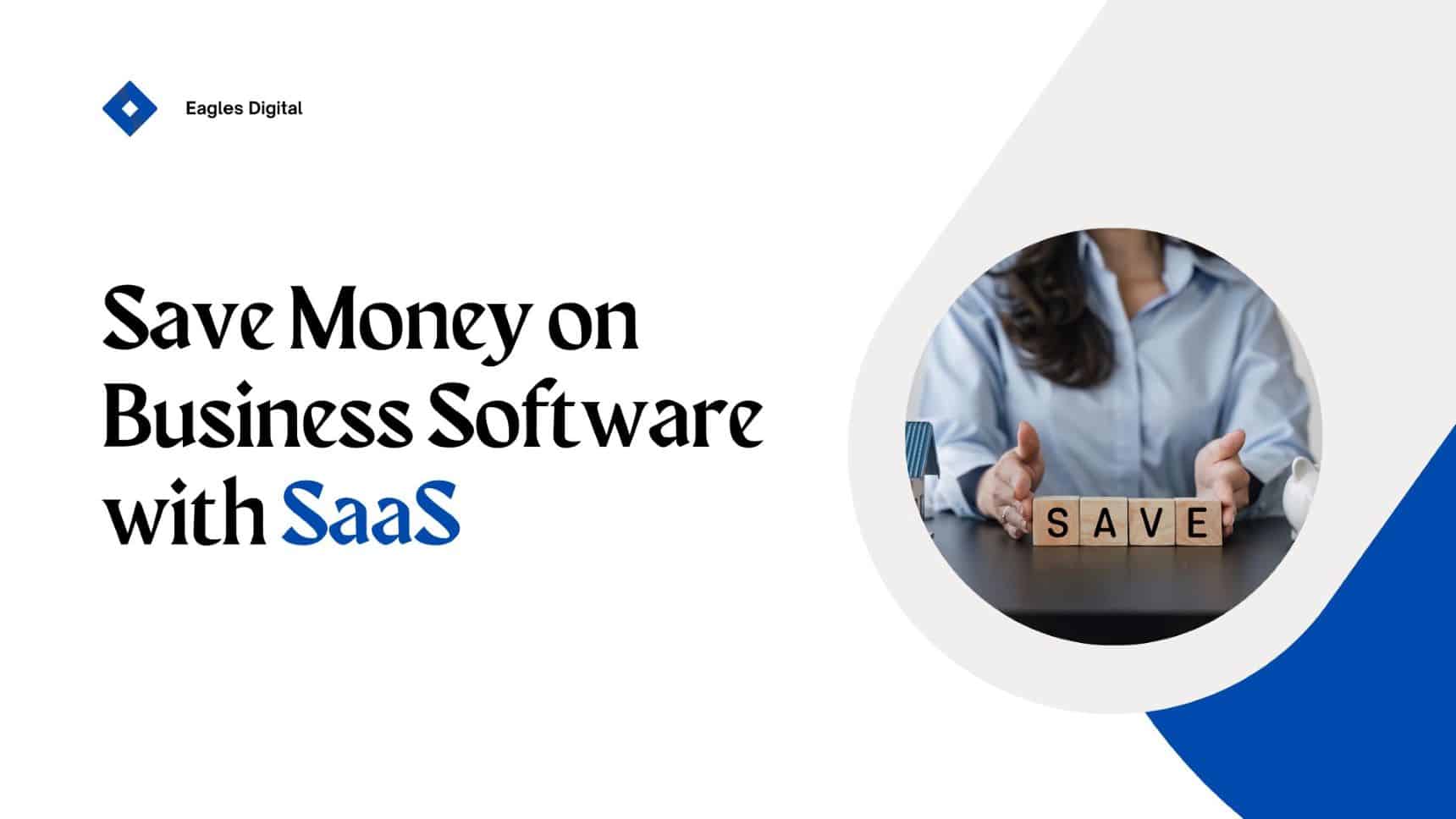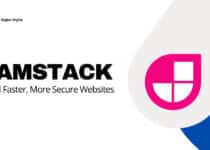How to Save Money on Business Software with SaaS

Running a business requires various tools and software to streamline operations, manage tasks, and enhance productivity.
However, the cost of these software solutions can quickly add up, and get your business into financial difficulty. Fortunately, Software as a Service (SaaS) offers a smart way to access powerful tools without breaking the bank.
SaaS models provide businesses access to software online without the high upfront costs or maintenance fees. This model helps reduce expenses while providing powerful tools and features to support your operations.
In this guide, I’ll show you how to save money on business with SaaS. You’ll also learn the benefits of SaaS and get expert tips for using it effectively.
How to Save Money on Business Software with SaaS
Here are some expert tips to help you save money with SaaS:
1. Evaluate Your Needs Carefully
Evaluate your business needs closely to identify the specific features and functionalities you need.
Stay cost-efficient by choosing SaaS solutions that directly meet those needs and deliver great value.
For example, before evaluating a Customer Relationship Management (CRM) Tool, you may want to ask yourself:
- How many customers do you have? Are they mostly individuals or businesses?
- What is your sales process like? How many steps are involved?
- How many people are on your sales team?
- What specific features do you need?
- Do you need your CRM to integrate with other tools like accounting software, quoting software or marketing apps?
Evaluating these factors helps you choose a CRM tool with the right features. This approach prevents you from overspending on tools you don’t need.
2. Start with Free Trials or Freemium Plans
Many SaaS providers offer free versions of their software. These are especially useful for smaller businesses or limited usage.
For example, at Eagles Digital, my small team and I use free versions of powerful SaaS tools like Trello, Notion, and Mailchimp to manage our daily tasks. These tools help us stay organized, and streamline our workflow without breaking the bank.
Before committing to a SaaS tool, you can benefit from their free trials and freemium plans to test it out and ensure it aligns with your business needs and budget. Then you can upgrade as your business grows.
This will help you identify the right tools for your business and avoid unnecessary costs.
3. Take Advantage of Discounts and Promotions
SaaS providers often run promotions, offer discounts, or provide deals for annual subscriptions.
If you’re committing to a long-term subscription or buying multiple tools, don’t hesitate to negotiate for discounts.
As a Marketing Professional with over 10 years in the SaaS industry, I’ve noticed that most SaaS providers offer discounts for annual subscriptions.
Additionally, Many SaaS companies offer discounts to students, startups, and non-profits. Ask about these special deals.
4. Use Only What You Need
Once you’re clear about the features you need, Choose the pricing plan that best suits your business size and needs. Avoid paying for extra users or features that you won’t use.
One of my favourite things about SaaS is how easily it can grow with my business.
You can always upgrade later as your business grows, but starting small can save you a lot of money in the long run.
5. Consolidate SaaS Tools
Many businesses use too many different SaaS tools to do similar things. This strategy can lead to paying for multiple subscriptions unnecessarily.
To save money, check if you can use fewer tools. Some tools, like HubSpot, offer many features that cover marketing, sales, and customer relationship management (CRM) needs, so you might not need as many separate tools.
Consolidating your SaaS tools into one comprehensive platform can save both money and time. On top of that, it simplifies your business operations.
6. Evaluate Regularly
SaaS is always changing. New tools and prices come out all the time.
So regularly review the tools that you use to ensure you’re still getting the best value for your money. Sometimes switching to a new tool or renegotiating your subscription can result in savings.
Learning how to evaluate software regularly is crucial for your business, as it helps save valuable time, reduce costs, and ensure you’re still getting the best value for your money.
Additionally, many SaaS providers improve their pricing structures over time, offering more features at a lower cost. Keep an eye on market trends and adjust your tools as needed.
7. Monitor User Licenses
you need to track your SaaS expenses and adjust your subscriptions as needed.
Plus, some SaaS platforms offer the option to pay per active user, so if that’s available, consider switching to that model to save money.
As a small business owner using various SaaS tools like project management, CRM, and email marketing software:
- If your sales team grows, you may need to upgrade your CRM plan to accommodate more users.
- If you need fewer project management features, consider downgrading to a cheaper plan.
- If you’re not using all the tool’s features, switch to a plan with fewer features to save money.
The Advantages of Using SaaS Software
Software as a Service (SaaS) has changed the way businesses operate, offering many benefits that can significantly impact your bottom line. Here’s why you should adopt SaaS platforms:
1. Reduced Upfront Costs
SaaS solutions are cloud-based, meaning you don’t need to invest in expensive hardware to run them. Unlike traditional software, SaaS works on a subscription basis. You simply pay a subscription fee, which eliminates the need for large upfront investments, making it more affordable.
2. Scalability and Flexibility
SaaS providers give you the ability to scale your software usage up or down based on your business needs, so you’re only paying for what you use. This method helps you avoid overspending on unnecessary features.
Additionally, SaaS providers automatically take care of updates and upgrades, so you always have the newest features and security fixes.
3. Lower Maintenance Costs
You can take full advantage of your favourite SaaS platform while SaaS providers handle software updates, security, and maintenance.
The best part is that SaaS solutions are often easier to manage and require less technical expertise.
This gives you the ability to focus on what matters most in your business, enhance productivity, reducing the need for in-house IT staff.
4. Improved Efficiency
SaaS tools can save you time and grow your business. These tools help you automate tasks, improve collaboration, and streamline your business processes.
On top of that, SaaS platforms often provide valuable data and analytics that can help you make better decisions and identify areas for improvement.
5. Access to Cost-Effective Tools with Latest Features
SaaS providers are constantly innovating and introducing new features to their platforms. By using SaaS, you can easily access the latest technology without having to make significant investments.
The SaaS market offers a variety of affordable tools for businesses of all sizes and industries.
The good news? Most Software as a Service (SaaS)providers offer free or freemium plans, allowing you to try out their software before committing to a paid plan.
How to Save Money on Business Software with SaaS – FAQ
Is SaaS more cost-effective for small businesses?
SaaS is usually way more affordable for small businesses than traditional software licensing.
With flexible subscription models, SaaS tools allow small companies to start small and upgrade as their business grows, making them cost-effective solutions.
SaaS is a smart way for small businesses to significantly reduce their software expenses while gaining access to powerful tools that can help them grow and succeed.
How do I choose the right SaaS tools for my business?
To choose the right SaaS tools for your business, start by considering your specific needs, budget, and the size of your business and ensuring the tool can scale with your growth.
Look for tools that can easily integrate with other software you already use to create a seamless workflow.
Another important thing is to make sure the SaaS tool provider offers reliable customer support.
Since most SaaS tools offer free trials or freemium plans, I recommend trying out the tool before committing to a purchase.
What are the hidden costs associated with traditional software licensing?
Traditional software licensing comes with hidden costs like large upfront fees, additional hardware requirements, and ongoing maintenance expenses.
As you know businesses often need to invest in IT support, training, and upgrades, which can add up significantly over time.


